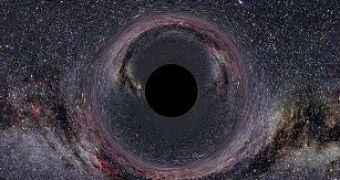If the previous record holder reflected only about 0.16 percent of the shined light, the newly designed material is at least four times more efficient at absorbing light. Scientists from the Huston University have been successful in creating the darkest material known to man. But what is an ultrablack material?
An ultrablack material represents a substance that closely mimics the characteristics of the black body. A black body object has the capability of absorbing all the electromagnetic radiation that falls towards its surface, thus black body objects do not reflect any electromagnetic radiation. These unique characteristics make the black body the ideal source for thermal radiation. Nevertheless, the black body is merely an abstract concept and does not have its place in reality. Probably the closest structure to the properties of a black body is the event horizon of a black hole.
The black body describes a system in which thermal energy is being carried out through electromagnetic radiation. This unique property enable the measurements of distant hot objects by approximating their temperature, based on the light they give off. For example, black bodies don't emit electromagnetic radiation, so they would appear as black; the visible spectrum starts with the color red and ends with blue, in the sense of temperature increase.
The material designed by a professor of engineering from Rice University, Pulickel Ajayan, reflects only 0.045 percent of the light received on its surface. Created from carbon nanotubes, this new dark material could present solutions to a number of applications, such as ultra efficient solar panels that prevent the light reflection, or potential uses in telescope manufacturing.
The previous record holder for the darkest material was a nickel and phosphorus alloy, created by a team of scientists from the UK, that reflected only 0.16 percent of the light received on its surface.

 14 DAY TRIAL //
14 DAY TRIAL //